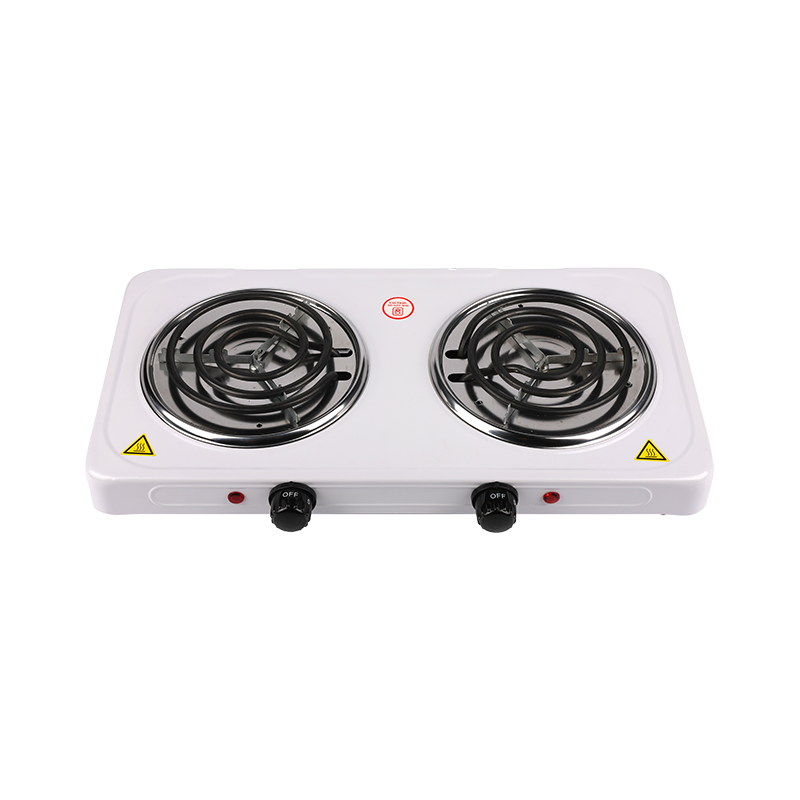Intelligent, efficient and energy-saving single hot plate
Cat:Single Hot Plate
In the realm of culinary innovation, our company stands at the forefront with its cutting-edge single hot plate, engineered to embody the trifecta of ...
See DetailsChoosing the right heating hot plate can make a significant difference in both cooking and heating efficiency. Two common materials used for heating hot plates are cast iron and stainless steel. Each material brings its own advantages and considerations, so understanding their features can help you select the option for your specific needs.
One of the standout qualities of the Cast Iron Heating Hot Plate is its exceptional heat retention. Cast iron absorbs and holds heat evenly, which allows the surface to maintain a stable temperature for longer periods. This property is especially useful when you want to cook food evenly or keep it warm without constant energy input.
In contrast, stainless steel hot plates tend to heat up quickly but may not retain heat as long as cast iron. Stainless steel is a good conductor of heat but can have uneven temperature distribution if not designed with care. Therefore, if consistent heat over time is important to you, the Cast Iron Heating Hot Plate may be preferable.
Both cast iron and stainless steel are known for their durability, but they have different maintenance needs. The Cast Iron Heating Hot Plate is very tough and can withstand high temperatures without warping. However, cast iron requires occasional seasoning or proper cleaning to prevent rust and maintain its surface condition.
Cast iron is a heavy material, making the Cast Iron Heating Hot Plate relatively heavier than stainless steel counterparts. This weight provides stability during use, preventing the hot plate from shifting on countertops or work surfaces. However, the added weight can make cast iron plates less portable or more challenging to handle, especially in smaller kitchens or mobile setups.
Stainless steel heating hot plates are lighter and often more compact. This makes them easier to move and store, which can be a significant advantage if you need a portable heating solution.
The look of a hot plate can influence its appeal in your kitchen or workspace. The Cast Iron Heating Hot Plate typically has a classic, rustic appearance that fits well in traditional or industrial-style settings. Its dark, matte finish adds a touch of timelessness.
Stainless steel hot plates have a modern and sleek appearance. Their shiny surfaces can complement contemporary kitchen designs and professional environments. If style and visual integration are important, your choice might lean toward stainless steel or cast iron depending on your decor preferences.
Due to its good heat retention, the Cast Iron Heating Hot Plate often operates more efficiently once it reaches the desired temperature. It requires less frequent reheating, which can help conserve energy over time.
Stainless steel heating hot plates heat up quickly but may need continuous energy to maintain temperature. While both materials can be energy efficient when designed well, cast iron’s heat retention gives it a slight edge in long-term energy use.
Stainless steel hot plates often cool down faster, reducing the risk of accidental burns after turning off the heat. Additionally, many modern stainless steel models include safety features such as automatic shutoff and temperature controls.
The Cast Iron Heating Hot Plate is versatile and works well for a variety of heating and cooking tasks. Its ability to maintain heat suits slow cooking, frying, and heating applications in both residential and professional settings.
Stainless steel hot plates are also versatile and commonly used in commercial kitchens, laboratories, and workshops due to their easy maintenance and quick heating abilities.
Choosing between a Cast Iron Heating Hot Plate and a stainless steel heating hot plate depends largely on your specific needs and preferences. If you value good heat retention, durability, and a traditional look, the Cast Iron Heating Hot Plate could be the right choice. For those prioritizing portability, ease of cleaning, and a modern aesthetic, stainless steel may be better suited.
Both materials have proven themselves useful in various contexts, and understanding their differences can help you pick the heating hot plate that fits your cooking or heating routine.
